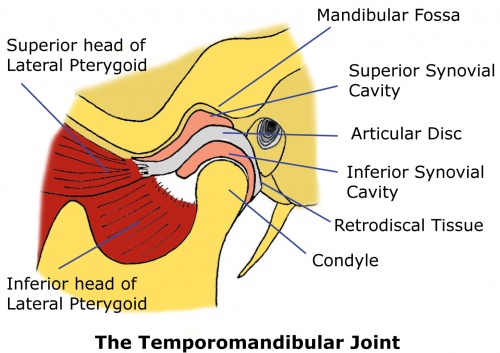Describe the Action of the Temporomandibular Joint
INTRODUCTION The most important functions of the temporomandibular joint TMJ are mastication and speech and are of great interest to dentists orthodontists clinicians and radiologists. This process involves an interaction among the muscles of mastication teeth tongue and the pair of temporomandibular joints.
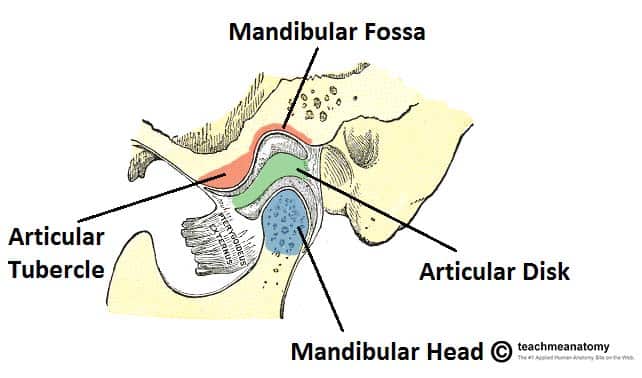
The Temporomandibular Joint Structure Function Teachmeanatomy
Lubricate the joint and reduce the friction between the two articular surfaces 2.
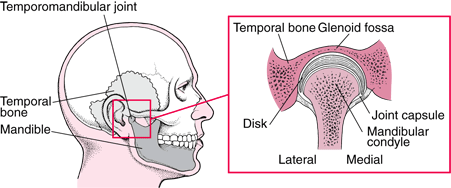
. The stylomandibular ligament arises from the styloid process and attaches to the mandibular angle. Ad Check out 9 it may change your Life. You have one joint on each side of your jaw.
The temporomandibular joint TMJ is the ar- ticulation between jaw and head bilaterally. Its complexity leaves it prone to a number of pain responses and histological tissue changes. Describe the bones at this articulation and the muscles that act on them 1.
Mandibular opening is initiated by action of the suprahyoid muscles. The joint responds by increasing production of the lubricating synovial fluid but this can lead to swelling of the joint cavity causing pain and joint stiffness as the articular capsule is stretched. Opening and closing the jaw is a simple hinge action while side-to-side jaw movement requires a sliding action of the joint.
The temporomandibular joint TMJ is a joint between temporal bone and mandible that enables the movements of the mandible for language and mastication. Learn vocabulary terms and more with flashcards games and other study tools. The disc divides the joint into two distinct parts which are referred to.
The temporomandibular joint TMJ is the articulation between the mandible the articular disc and the temporal bone of the skull Fig. The cranium with which the mandible articulates is also. Mastication is the process of chewing tearing and grinding food with the teeth.
The following is a brief description of its anatomy and how it functions in relation to the rest of our skull and central nervous system. The temporomandibular articulation is unique in the body in that the two joints must always move simultaneously. O Both statements are true Both statements are false The first statement is true the second statement is false The first statement is false the second.
Of Periodontology and Implantology. Describe the action of temporomandibular joint allows for movement of the mandible for speech and mastication of the mouth. Start studying Temporomandibular Joint.
The tempormandibular joint jaw joint or TMJ is a rather complex aspect of our anatomy. Jointly it allows man to sustain functions of life-chewing sucking kissing speech etc. It is from these bones that its name is derived.
The Temporomandibular Joint Components and Repair The temporomandibular joint TMJ the jaw joint is located between the mandible and temporal bones and has hinge sliding and translational characteristics that allow for complex movements like chewing swallowing talking yawning breathing and facial expressions. The temporomandibular tem-puh-roe-man-DIB-u-lur joint TMJ acts like a sliding hinge connecting your jawbone to your skull. The TMJ is found anteriorly to the tragus of the ear on the lateral aspects of the face.
In anatomy the temporomandibular joints are the two joints connecting the jawbone to the skull. As such this joint. It is doubtful if any other diarthrodial joint is used as often and with such vigor.
TMJ is composed of a synovial cavity articular cartilage and a capsule that covers the same joint. Although the TMJ is classified as a hinge-type joint its action is much more complex. Describe the movement produced by each extraocular eye muscle.
The temporomandibular joint TMJ is innervated by the maxillary nerve division of the fifth cranial or trigeminal nerve. The blood supply to the joint is from branches of the external carotid artery. Explain how the muscles of the tongue and anterior neck are named.
Clinical Challenge Mary suffers with temporomandibular joint TMI syndrome. This video is available for instant download licensing here. Since the TMJ is connected to the mandible the right.
The TMJ therefore is called a ginglymoarthroidal joint. TMJ disorders a type of temporomandibular disorder or TMD can cause pain in your jaw joint and in the muscles that control jaw movement. Learn more for more Ideas and suggestions.
There are two joints one on every side of the head The mandible is one bone having 2 heads which joint on every side with temporal bone of cranium. It is a joint containing soft. Between the two bones is an articular disc.
The joint is the union of the temporal bone cavity with the mandibular condyle. This joint is unique in that it is a bilateral joint that functions as one unit. The temporomandibular ligament is located on the lateral aspect of the capsule and its function includes preventing the lateral or posterior displacement of the condyle.
Remove the debris from the joint space. We find the synovial fluid and several ligaments. Describe the location of the major and minor salivary glands and associate ducts Minor salivary glands are smaller and more numerous in the major ones Major salivary glands parotid submandibular and sublingual glands.
It allows opening closing and a side to side movement of the mouth. It is a bilateral synovial articulation between the temporal bone of the skull above and the mandible below. 12 TMD is a collective term used to describe a number of related disorders affecting the stomatognathic.
The temporomandibular joint commonly referred to as the TMJ consists of the articulation between the condyle of the. Approximately 5075 of the general population has experienced unilateral temporomandibular joint dysfunction TMD on a minimum of one occasion and that at least 33 have reported a minimum of one continuing persistent symptom. Provide the nutrition to the non-vacularised tissues 3.
Two distinct movements rotation and translation occur in the joint during mandibular opening and closing. Everything you need to know. Describe the development of secondary condylar cartilage.
The temporomandibular joint TMJ is formed by the articulation of the mandible and the temporal bone of the cranium. What is the action of the lateral pterygoid. The temporal bone of cranium and the mandible fit together to form a hinge-like jaw joint.
The temporomandibular joint TMJ is a diarthrosis better defined as a ginglymoarthrodial joint. The TMJ is a ginglymoarthrodial joint a term that is derived from ginglymus meaning a hinge joint allowing motion only. Describe the actions of the digastric muscle.
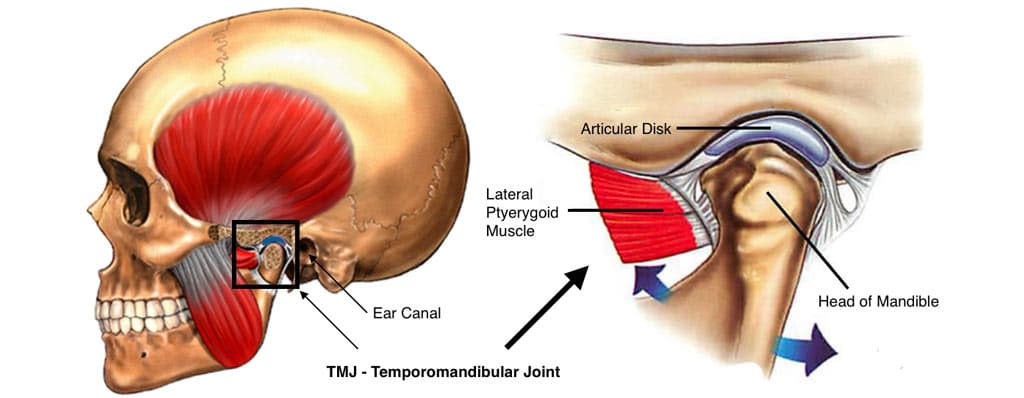
Total Temporomandibular Joint Tmj Replacement Larry M Wolford Dmd

Anatomical Structure Of The Temporomandibular Joint Tmj Source Download Scientific Diagram

Overview Of Temporomandibular Disorders Tmd Dental Disorders Msd Manual Professional Edition

Anatomical Structure Of The Temporomandibular Joint Tmj Source Download Scientific Diagram

Pdf Biomechanics Of The Temporomandibular Joint Semantic Scholar

Tmj Temporomandibular Joint Disorders Symptoms And More
Temporomandibular Joint Type Capsule And Ligaments Relations Movements Anatomy Qa
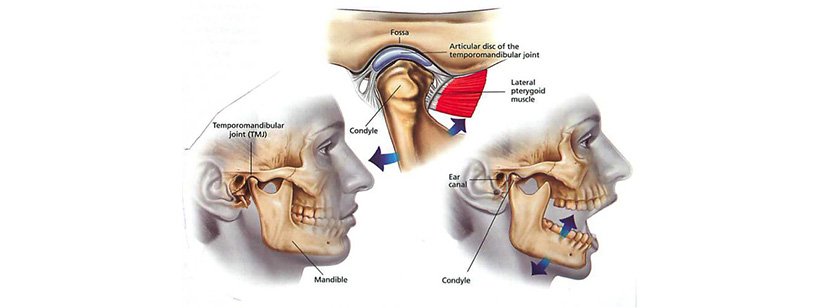
Temporomandibular Joint Dysfunction Syndrome Tmjpds Explained Aperture Dental Practice

Components Of The Temporomandibular Joint Download Scientific Diagram

Functional Surgery Of The Temporomandibular Joint With Conscious Sedation For Closed Lock Using Eminectomy As A Treatment A Case Series Journal Of Oral And Maxillofacial Surgery

Temporomandibular Joint Tmj Anatomy 3d Anatomy Tutorial Youtube

Structure And Function Of The Temporomandibular Joint Tmj Youtube
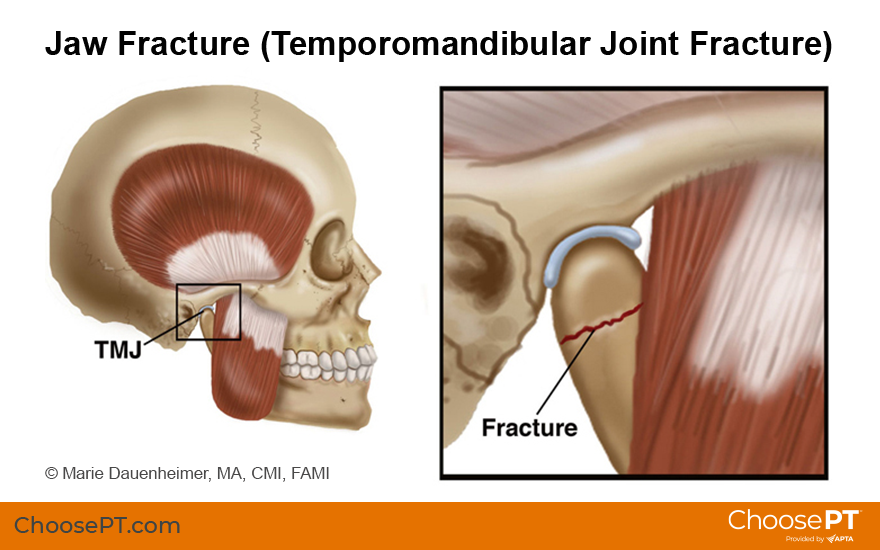
Guide Physical Therapy Guide To Jaw Fracture Temporomandibular Joint Fracture Choose Pt

Temporomandibular Joint Anatomy Mri Tmjs Anatomy Free Sagittal Cross Sectional Anatomy Joints Anatomy Temporomandibular Joint Mri

The Mandible Human Anatomy And Physiology Bone And Joint Dentistry

Movements Of Temporomandibular Joint Axes Of Movements Muscles Producing The Movements With Aa Youtube

Neurological Influences Of The Temporomandibular Joint Journal Of Bodywork And Movement Therapies

The Temporomandibular Joint Structure Function Teachmeanatomy
